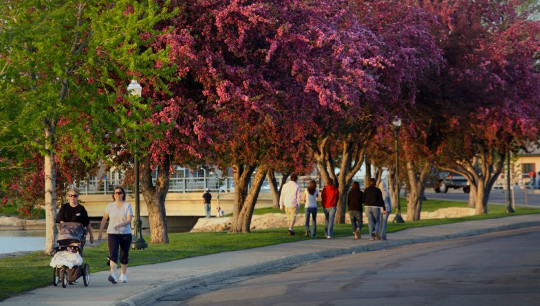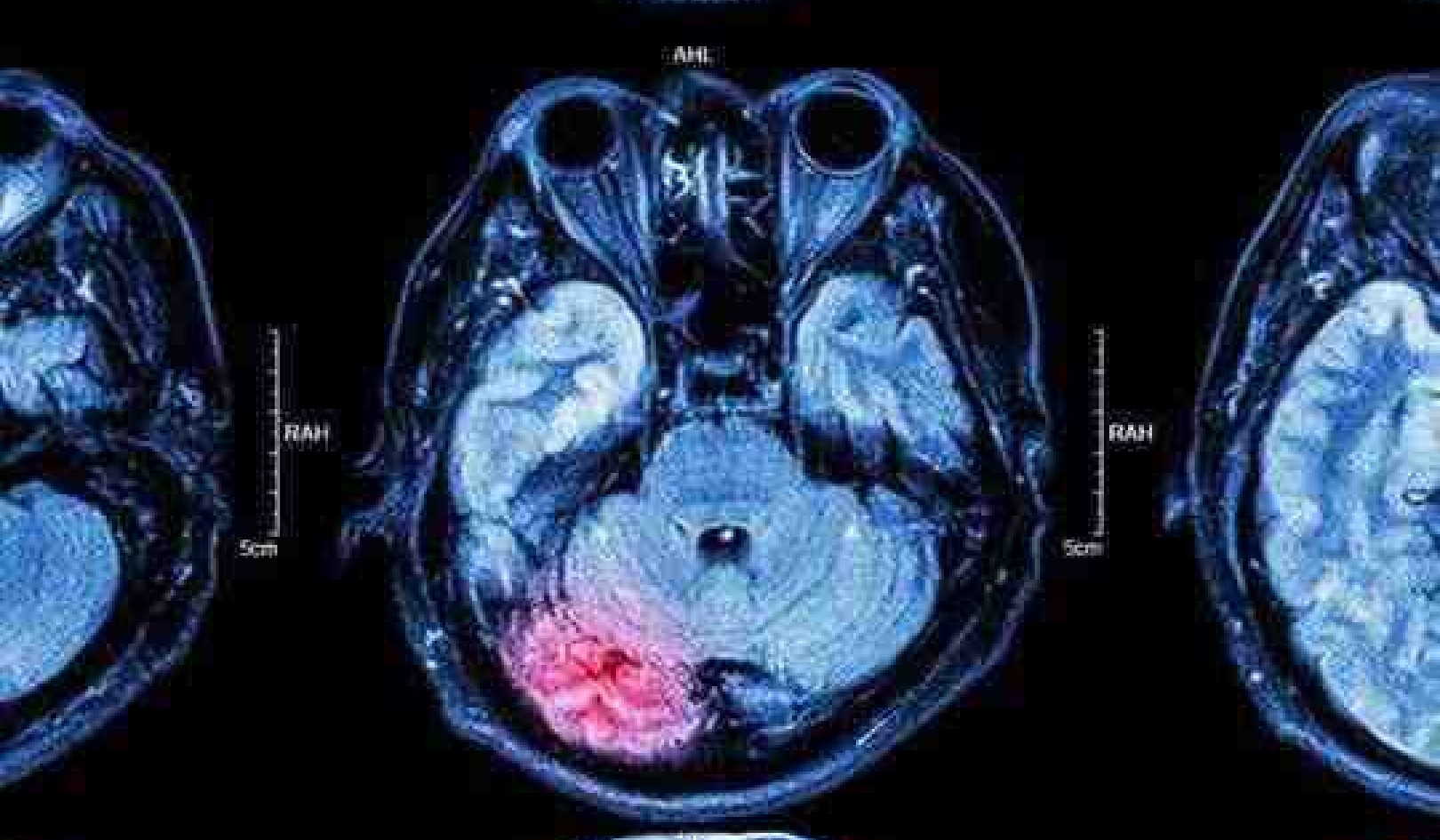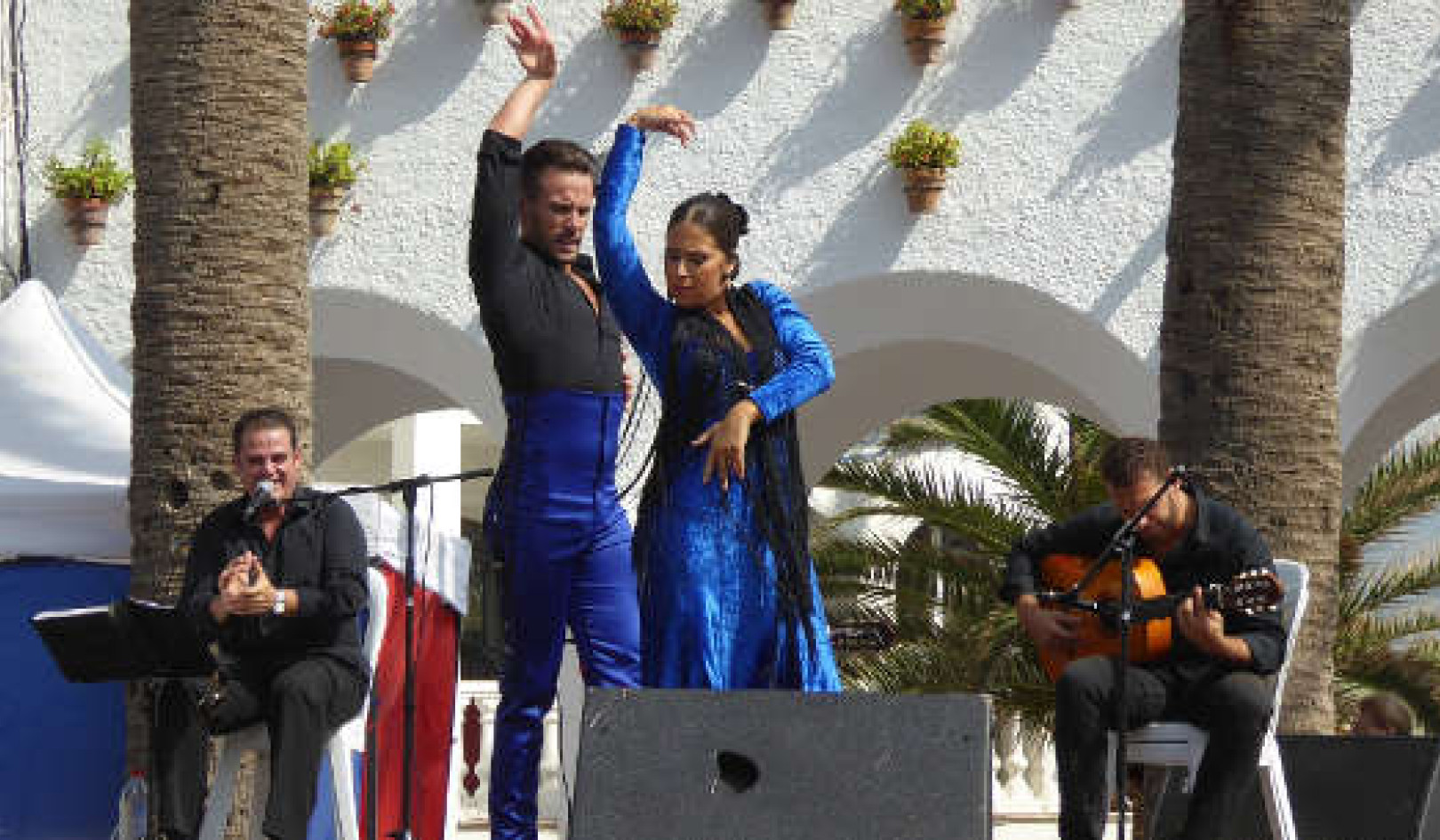 Healthy habits rejuvenate community life in Albert Lea, Minnesota. The streets of Albert Lea. (Courtesy of Blue Zones)
Healthy habits rejuvenate community life in Albert Lea, Minnesota. The streets of Albert Lea. (Courtesy of Blue Zones)
It’s like a small-town scene from Norman Rockwell, updated for the 21st Century.
A Latino family strolls leisurely through the park, immersed in conversation. Coming up fast behind is a blonde woman in designer exercise gear and earplugs, intent on maintaining her power-walking pace. Bringing up the rear is a young man with his Husky, both of them staring up at a patch of sun that has appeared from behind the clouds.
In real life, this is Albert Lea, Minnesota, a town of 18,000 working to prove that healthy lifestyles like walking and good nutrition are not just big city things. “We’re not a resort town or a college town, we’re an ag-based rural city promoting healthy living because it’s the right thing to do and it’s how we want to live and want our children to live,” explains Ellen Kehr, a former city council member who is a leader in the effort to make Albert Lea healthier.
It’s mistakenly assumed that no one in smaller communities walks, except between their pick-up truck and the Walmart entrance. Actually, walking is far more common in smaller communities across the country than people think. In towns of 10,000-50,000, 8.5 percent of all trips are made on foot, second only to “urban core” communities, according to the US Department of Transportation’s National Household Travel Survey. In smaller towns 2500 to 10,000, walking accounts for 7.2 percent of trips--higher than in most suburban communities.
Get The Latest By Email
Albert Lea in many ways resembles Garrison Keillor’s Lake Wobegon (only more diverse--about 10 percent people of color). It’s a place “where the women are strong…and all the children are above average.” That fits with goals local citizens embraced in 2009 when they adopted a community-wide approach to wellness laid out in Blues Zones, a best-selling book by National Geographic Fellow Dan Buettner, which examines places around the world where people live longest and healthiest.
What they’ve accomplished over the past five years offers both lessons and inspiration for smaller towns and cities across the US. “The idea is to make the healthy choice the easy choice,” says Buettner, whose new book The Blue Zones Solution chronicles the progress in Albert Lea together with other community success stories around the world.
Around one-quarter of adults in Albert Lea participated in the Blue Zones project, along with half of local workplaces and nearly all kids in grades 3-8. Encouraging everyone to engage in more physical activity was a chief thrust of the campaign, which was funded in part by AARP.
Transformation on Main Street
It appears to have worked. Even on a gray, chilly weekday afternoon, the new 5-mile trail around Fountain Lake draws more walkers and bikers than you’d expect in a town set among soybean fields of southern Minnesota. The downtown, which borders the park, is filled with people on foot heading between the courthouse, the bank, the library, the furniture store, the kitchen store, clothing stores, churches, schools, restaurants, the coffee shop and-- in a perfect Prairie Home Companion touch--the Sportman’s Tavern, which advertises “cabbage roll hotdish” as the daily special.
Walking has increased 70 percent in the last five years, according to pedestrian counts conducted by the National Vitality Center, a local initiative that continued the community health campaign after the initial ten-month Blue Zones pilot program ended. “This was not achieved over the past two decades, but in the last five years,” notes Ellen Kehr, Organization Lead for the Blue Zones Project-Albert Lea, which recently launched a new project in town .
Smoking has also dropped four percent, and Blue Zones participants collectively lost almost four tons of weight, notes Buettner. Two-thirds of locally operated restaurants and one large supermarket now offer new options for healthy eating. Residents formed about thirty groups to walk or bike together regularly, nearly half of which are still going strong five years later.
“This has become a piece of who we are as a community, an opportunity to become an even better community,” declares Mayor Vern Rasmussen Jr.
City Council member Al Brooks, who now walks 2 ½ miles every day, credits the campaign with big improvements in his own health. “When I started four years ago, I had high cholesterol and high blood pressure. Now my cholesterol is lower, my blood pressure is 116/70 and I lost 15 pounds.”
After being launched in Albert Lea, the Blue Zones idea has now been taken to Fort Worth, Texas; Naples, Florida; Southern California; and across the states of Iowa and Hawaii.
“Los Angeles is going to be the next Albert Lea,” Buettner told a cheering crowd at the local high school at the kick-off of a new Blue Zones campaign, launched in partnership with Healthways, a Tennessee-based company focusing on well-being improvement solutions.
Albert Lea’s impressive health gains are paying off in many ways. Good Morning America broadcast live from the shores of Fountain Lake to tell the country what was happening here-- part of a wave of media attention which is valuable to the town’s future prospects, says City Manager Chad Adams.
"And the city’s health insurance premiums will not increase in 2015, instead of the double digit increases of the past few years,” Adams adds--a windfall for taxpayers, which he attributes to the community’s awareness of wellness, physical activity and the health benefits of strong social connections.
The ambitious project to make downtown more walkable figures prominently in Albert Lea’s economic strategies. “People who were skeptical are starting to see the fruit now that it’s done” says Adams. “Owners are investing in improving their buildings, and we’re talking to major prospects about moving downtown in the next year.”
Adams stresses that a lively, walkable community is key to attracting businesses as well as the families and young people that Albert Lea needs to thrive in decades to come. “It’s paramount that we grow our population and our tax base.”
Briana Czer, a young bank manager who moved here a year ago, thinks this strategy is working. “I like how walkable Albert Lea is. When people walk more, they socialize more. That helps connect everyone and makes me feel more part of the community, ” she says.
Albert Lea’s embrace of healthy living convinced Adams himself to move his young family here from an affluent Minneapolis suburb four years ago, choosing the city manager post here over several other job opportunities. “My kids love it here. There is so much to do-- riding bikes, walking on the trails, recreational opportunities in the parks and on the lakes, hanging out in the historic downtown. I was also impressed by the community-wide collaborative effort on the Blue Zones initiative to make positive change for the well-being on the community.”
How It Happened
So how exactly did Albert Lea get more people back on their feet walking, especially in a rural region where driving is deeply embedded in the fabric of everyday life?
It was a combination of: 1) creating a public education campaign about the health advantages of physical activity; 2) organizing people into informal social groups to walk regularly; and 3) making the city’s streets and parks more safe and appealing for pedestrians. Here are some of the accomplishments:
---A community-wide focus on physical activity--enlisting civic organizations, businesses, schools, public agencies, the media and citizens--offered continual reinforcement for people to get out and walk. “It has reconnected our community in a way that I never thought possible,” notes Randy Kehr, executive director of the Chamber of Commerce (and husband of Ellen Kehr). “Sociability is as important to health as exercise and eating.”
---Walking groups, which serve as an incentive to get off the sofa, even when you feel lazy or it’s freezing outside. This makes physical activity a social occasion to look forward to. In Albert Lea, walking groups are generally 4-10 people committed to walking together 3-7 times a week. Dennis Dieser, executive director of the local YMCA, notes there’s a group that gets together evenings to walk the grounds at a local school. “Ten times around the building is a mile,” he says, “and you see more and more people joining.”
---Downtown was made more walkable by widening sidewalks, eliminating unnecessary traffic lanes, restoring diagonal parking, replacing some stoplights with stop signs, and “bumping out” sidewalks into the intersection, which shortens the crossing distance on busy streets. Almost immediately the 112 Broadway restaurant sprouted a sidewalk café. “It makes downtown feel more like a downtown,” says Public Works Director Steve Jahnke. “All the improvements around town makes us feel more like a community-- a sense of pride, more opportunities to talk to people, to do things.”
---Sidewalks were added to six-and-a-half miles of city streets in strategic locations near schools, senior centers and businesses.
---A bikeway along Front Street now connects a state park to downtown and a commercial street on the city’s west side. Bicycling has risen 74 percent on the street, according to the National Vitality Project’s count. Eventually, the bike lane will connect two state trails, enabling people to bike or walk 65 miles unhindered by vehicle traffic.
---A number of neighborhoods created walking school buses so kids and parents could get exercise on the way to school. It’s works just like a school bus, except without the bus. A parent picks up kids at their homes and takes them safely to school on foot.
---A 5-mile walking continuous path was built around Fountain Lake, and the park’s boathouse was transformed into a full-fledged recreation center where kayaks, canoes, paddleboards, x-country skis and snowshoes can be rented.
---A new Complete Streets ordinance requires that all road users be considered in transportation planning decisions, not just cars and trucks. This means any new subdivisions must be built with sidewalks, and reconstruction projects must take in account the pedestrians’ needs.
---Some companies have charted 15-minute and 30-minute walks in and around their workplaces, so employees can make the most of breaks and lunchtime.
---The city is considering converting another downtown section of South Broadway from four to three lanes to make it safer.
---A major walkable mixed-use development on the site of a former meatpacking plant close to downtown is also being planned to steer more development to the heart of the city.
Small Is Advantageous
"Small towns can reinvent themselves as places faster than big towns,” explained Dan Burden--one of America’s foremost authorities on walkable communities--to a roomful of city, county and state officials at Albert Lea’s City Hall working on further improvements for the town.
Former Bicycle and Pedestrian Coordinator for the State of Florida, Burden is the Johnny Appleseed of urban vitality, who has brought ideas for walkability and livability to over 3500 North American communities in the past 18 years. He helped Albert Lea citizens map out their original healthy cities strategies in 2009 as part of the Blue Zones team, and has now returned for the new phase of work as the organization’s Director of Innovation.
“When I first came into Albert Lea, I’ll be honest, it looked like the downtown was closed,” he admitted to the local officials. “There were businesses but there was no life in the streets. That’s changed now. Albert Lea, I am proud of you.”
Quality of life and streetlife are important elements for attracting and holding onto the business leaders and employees the town needs to succeed, Burden said, especially young people, who are much less attached to owning cars than previous generations. Burden asked, “What would Millennials rather give up--their cars or their cell phones…” The audience shouted out “cars” before he could finish his sentence.
But young people aren’t the only ones who feel there is more to life than driving.
“All of us are in our cars more than we like, that’s universal,” Burden said. “We all want to have other options, biking, walking, living closer to the places we want to be.”
“Plus,” he added, “the silver tsunami--vast numbers of aging baby boomers--is coming!”
He said that men outlive their ability to drive by seven years on average, and women by 10. But more transportation choices is not the only stake older people have in creating more walkable communities, Burden added. “We also want to have our grandchildren nearby, which means we need to make sure our towns are appealing to younger people.”
This article originally appeared on OnTheCommons
About the Author
 Jay Walljasper writes, speaks, edits and consults about creating stronger, more vital communities. He is author of The Great Neighborhood Book and All That We Share: A Field Guide to the Commons. He is also a contributor to Sustainable Happiness: Live Simply, Live Well, Make a Difference, from YES! Magazine. His website: JayWalljasper.com
Jay Walljasper writes, speaks, edits and consults about creating stronger, more vital communities. He is author of The Great Neighborhood Book and All That We Share: A Field Guide to the Commons. He is also a contributor to Sustainable Happiness: Live Simply, Live Well, Make a Difference, from YES! Magazine. His website: JayWalljasper.com
Book by this Author:
The Great Neighborhood Book: A Do-it-Yourself Guide to Placemaking
by Jay Walljasper.








